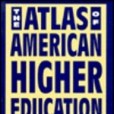內容簡介
The authors' innovative approach to the presentation of data, prominently featured in the Wall Street Journal and the Boston Globe, is a welcome change from the traditional form of dry statistics, tables, and charts. Here is an essential reference book which will be enthusiastically welcomed by all those interested in American higher education. This innovative approach to the p...(展開全部) The authors' innovative approach to the presentation of data, prominently featured in the Wall Street Journal and the Boston Globe, is a welcome change from the traditional form of dry statistics, tables, and charts. Here is an essential reference book which will be enthusiastically welcomed by all those interested in American higher education. This innovative approach to the presentation of educational data is a welcome change from the traditional portrayal of such data in the form of dry statistics, tables, and charts. The striking visual approach provides the reader with a clear, concise understanding of higher education in this country and a comprehensive overview of current trends. By seeing the data graphically portrayed, even a casual reader can develop a broad understanding of basic information in a relatively short period of time. From the masses of information that are regularly collected and compiled by the many agencies and associations concerned with higher education, the authors have carefully chosen the most important data and those that highlight the spatial patterns. The Atlas clearly shows the influence of the 50 separate and distinct systems that make up American higher education. Moving beyond the relatively simplistic portrayals of statistical data found in existing fact books, The Atlas of American Higher Education presents dozens of maps on such topics as enrollment; students and faculty; cultural diversity; specialized institutions; two year colleges; outcomes of higher education; student costs and student aid; and financing of higher educa

